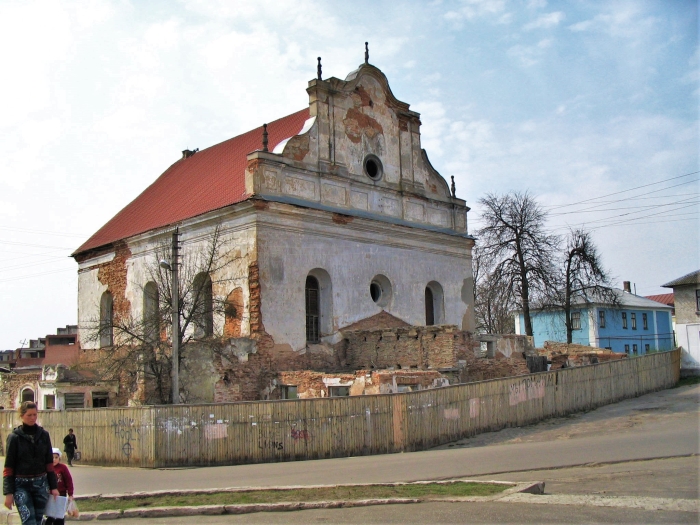A new Museum of Jewish Culture will be housed in the 17th century synagogue in Slonim, Belarus, the BELITA news agency reports. The Slonim regional administration and the Slonim Jewish Association in Israel are to finance directly further restoration of the synagogue.
The synagogue, built in the mid-17th century, is located in the middle of the city of Slonim. Restoration work has been performed and the roof has been fixed. Original interior elements have been preserved.
“In earlier times Jews constituted more than 80% of the population in Slonim. Visitors from abroad continuously come to see the homes of their parents, grandparents and great-grandparents. Many visit the synagogue. The Jewish museum would be a tourist attraction and would draw more visitors to the city,” the regional administration observed.
The synagogue reconstruction project will be one of the programs in cross-border cooperation. A tender will be held in the near future to find the organization with the best plan and lowest cost. The tender is slated for completion within one year, after which the amount of work to be done and the schedule for completing the reconstruction should be clearer.
Slonim is a town in the Grodno district. Historically, it has passed hands between Lithuania, Russia, Poland and now Belarus. According to the Jewish Encyclopedia of 1906: “… it became part of Lithuania in 1316. Jews probably lived in Slonim under Grand Duke Gedimin and his followers, although the first documentary evidence that a Jewish community existed there dates back only to 1551, when mention is made of a community which was exempted from the special tax called ‘scherebschisna’ [‘srebshzizna’].”
Encyclopedia Judaica (2nd editions, 2007) says: “…Jewish merchants from Slonim traded with Lublin and Posen. By decision of the Lithuanian Council (see Councils of the Lands) in 1623, the Jews of Slonim were placed under the jurisdiction of the Brest community. From 1631 Slonim appears in the accounts of the pinkas of the Council of Lithuanian Jews as an independent community. A magnificent stone synagogue was erected there in 1642. In 1660 the Jews suffered persecutions by the armies of Stephan Czarniecki. In the latter part of the 17th century the Jews of Slonim traded in wheat and timber with Koenigsberg; later on wealthy merchants traveled to the Leipzig fairs. Others earned their livelihood in contracting, manufacturing alcoholic beverages, and crafts. In 1764, after danger to the community from the advancing Russian armies had been averted, the day of deliverance, the 26th of Sivan, was subsequently commemorated in the community….”


